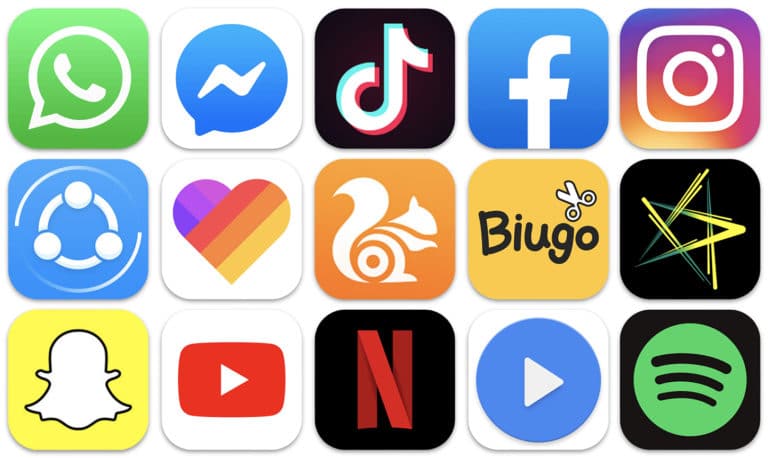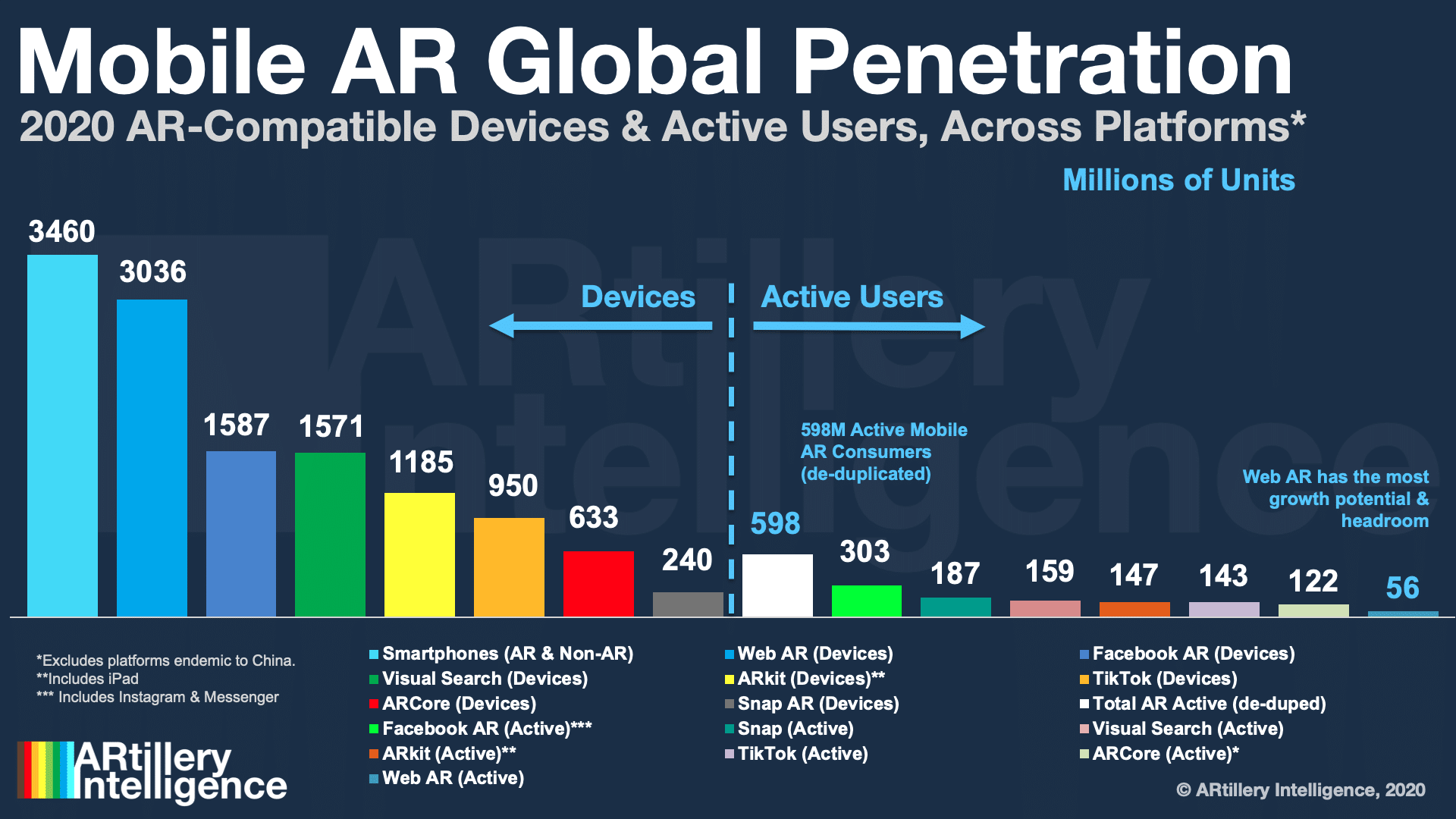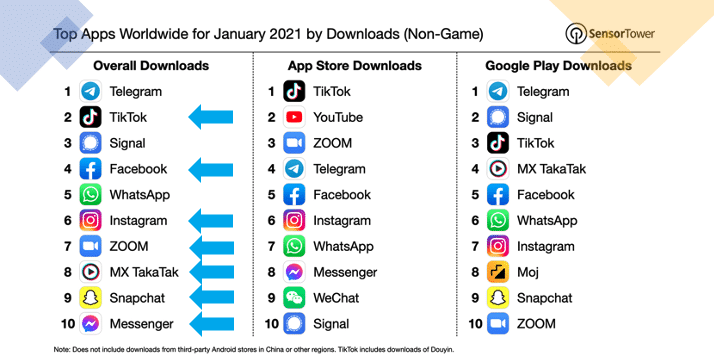
It’s clear that mobile AR is where the scale is today, given 3 billion global smartphones. As for the portion that’s AR-compatible, the common industry rally cry is that there are 1 billion+ AR-enabled smartphones. That figure applies to ARkit and ARCore-compatible smartphones.
But if you pan back to all platforms, such as Snapchat’s Lens Studio and Facebook’s Spark AR, the AR-ready universe is larger (figures below). But the number that matters most is active users across these platforms, which were projected to hit 598 million (de-duped) by the end of 2020.
As we examined recently, this contains a mix of platforms. In addition to those mentioned above, There’s TikTok, which is just getting revved up for a potential competitive stake in AR. And there’s web AR which has the most potential reach, due to its delivery through the browser.

Engagement Driver
Supporting AR’s overall penetration is new data from Sensor Tower that show top U.S. mobile app downloads for January. Notably, seven of the top ten apps feature AR to some degree. This doesn’t speak to AR engagement levels but is a good proxy for its penetration and exposure.
Zeroing in on iOS, the platform’s AR penetration is slightly lower at 6 out of 10, including slight deviations in apps that are represented. Android likewise has six of its top ten apps that feature AR. These apps each apply AR in different ways and degrees — some more central than others.
For example, Facebook and Instagram have leaned into AR lenses as an engagement driver that enhances already-popular media sharing (and monetization). The same goes — though to a lesser degree — to TikTok, which has massive global scale but underdeveloped AR (for now).

In fact, TikTok sits where Snapchat did before it launched Lens Studio — with all its AR lenses developed in-house. With a lens creator platform, it could be formidable. And it could differentiate given rear-facing camera orientation (think: dance routines). Snapchat is also moving this way.
Speaking of Snapchat, it sits lower on the list of top-ten apps, but it continues to be an AR leader with 75 percent of its users engaging AR. Other apps have greater overall usage but a smaller portion that’s AR-active, so these rankings don’t necessarily correlate to AR usage density.
Meanwhile, a contentious AR selection on the list may be Zoom. We include it as its virtual backgrounds meet our definition of AR (and lenses are possible via Snap Camera). That depends on your definition of AR: We tend to apply it broadly to any meaningful augmentation of reality.
XR Talks: Snap Reinforces AR Commitment
Business Case
On the same topic of broadening AR definitions, another contentious app is Pokémon Go (for the record, we stand on the side of its AR designation). Beyond that, and in the spirit of the above exercise, we dug further into Sensor Tower’s data to find that it’s likewise performing well.
Specifically, Pokemon Go is ranked fourth among top-grossing games in December (and first on Android). This is a good confidence signal for AR, not just in consumer traction, but revenue. Along with Snapchat, Niantic has validated a real AR business case, albeit somewhat narrow.
This also points to Pokémon Go’s longevity. Since its 2016 launch surge and subsequent dip, it has rebounded over the past 18 months with new revenue milestones and sustained usage. This is all fueled by a combination of game mechanics, ongoing updates and ingenuity at Niantic.

All cases above are good examples of AR as a Feature. This is the AR positioning that’s having the most traction today according to our survey research with Thrive Analytics. This stands to reason as it lets AR piggyback on popular apps rather than forcing app downloads.
We see this principle validated in the fact that the most popular form of AR so far — Snapchat lenses — are AR-as-a-Feature. This once again invokes our “training wheels” construct to acclimate users. AR is too early and unproven to get users to go out of their way or work for it.
But despite growing pains and a challenging path to gain mainstream consumer traction, we’re still seeing bright spots like sponsored lens ad revenue and enterprise adoption. Now we can add to that list the fact that AR is delivered alongside 70 percent of the top mobile apps.

